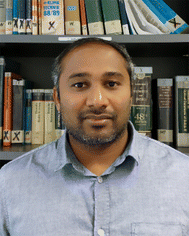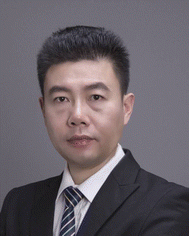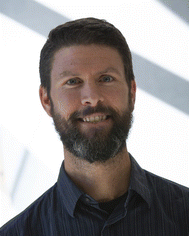Introduction to halide perovskite optoelectronics
Lakshminarayana
Polavarapu
a,
Maria Antonietta
Loi
b,
Haibo
Zeng
c and
Joseph M.
Luther
d
aCINBIO, Materials Chemistry and Physics Group, University of Vigo, Campus Universitario Marcosende, Vigo 36310, Spain. E-mail: lakshmi@uvigo.es
bPhotophysics and OptoElectronics, Zernike Institute for Advanced Materials, University of Groningen, Nijenborgh 4, Groningen, 9747 AG, The Netherlands. E-mail: m.a.loi@rug.nl
cMIIT Key Laboratory of Advanced Display Materials and Devices, Institute of Optoelectronics & Nanomaterials, College of Materials Science and Engineering, Nanjing University of Science and Technology, Nanjing, 210094, China. E-mail: zeng.haibo@njust.edu.cn
dChemistry & Nanoscience Center, National Renewable Energy Laboratory, Golden, Colorado 80401, USA. E-mail: Joey.Luther@NREL.gov
Abstract
An introduction to the Nanoscale themed collection on halide perovskite nanomaterials for optoelectronic applications, featuring a variety of articles that highlight the latest developments to address ongoing challenges in the field.
Over the last decade, halide perovskites (HPs) in the form of thin films and colloidal nanocrystals (NCs) have emerged at the forefront of materials science due to their promising optical and electronic properties along with solution-processability and expected low-cost.1–3 Along with high absorption cross section, long charge carrier diffusion length, high photoluminescence quantum yields (PLQYs) (in the case of 2D perovskites and colloidal NCs), and tunable emission across the visible to the near-IR region of the light spectrum, HPs exhibit uniquely high tolerance to crystallographic and other defects, which makes them promising for optoelectronics, especially for solar cells and LEDs.2,3 Although HPs have been known since the late 19th century,4 their potential for solar cells was first realized by Kojima et al. in 2009,5 and the subsequent breakthrough power conversion efficiencies (PCE) in 20126,7 has attracted researchers of various disciplines. Since then, we have witnessed tremendous progress in HPs in the fields of solar cells, LEDs, lasers, photodetectors, field-effect transistors, photocatalysis, and beyond.
Intense research on perovskite solar cells across the globe has resulted in a meteoric rise in PCE from 3.8% to over 26% in just over a decade, approaching now their power conversion theoretical limit (33.7%).8 On the other hand, the external quantum efficiency (EQE) of perovskite-based red and green LEDs has surpassed 26% and continues to rise.9 Despite rapid progress in the efficiency of perovskite optoelectronic devices, their real-world applications are hampered by the issues associated with long-term stability. Currently, research is being carried out to improve the stability (shelf-life) and performance by optimizing both the chemistry of perovskites and the device engineering. The addition of long-chain alkyl cations in the precursor solution of perovskite leads to the formation of 2D Ruddlesden–Popper perovskites (also called layered perovskites) with improved long-term stability against moisture and other environmental factors.10 The long-chain organic cations act as spacer layers between quasi 2D perovskite sheets of controllable thickness. The sheet thickness is, in principle, controllable by varying the ratio between the long-chain organic cations and the typical A-cations (MA or FA) in the perovskite precursor solution. However, in reality the mixing of long and short-chain organic cations results in the formation of layered perovskites of mixed phases (2D and 3D), while the use of long-chain organic cations only results in layered perovskites of higher bandgap. The mixed 2D and 3D perovskites can be engineered with additives to exhibit interesting photophysical properties with sometimes improved PLQY due to passivation or efficient energy funnelling that can be used to fabricate LEDs or solar cells with improved efficiencies.11,12 Significant efforts have been devoted to the development of mixed 2D layered perovskites and have succeeded in achieving long-term stability while achieving over 20% PCE.12
On the other hand, the synthesis of ligand-capped colloidal perovskite NCs leads to near-unity PLQYs, significantly reducing the nonradiative channels that exist in bulk perovskite films.13,14 The halide composition, and thus the emission color, is easily tunable by solution-phase halide exchange. In addition, the emission color is also slightly tunable by accessing quantum confinement effects through size control. Unlike the classical II–VI and II–V colloidal core–shell QDs, halide perovskite NCs exhibit extremely high PLQYs without a high bandgap shell on their surface.15 This is due to the defect-tolerant nature of HPs, in which the surface traps are shallow states (i.e. the states that are close to the band edges). Over the years, we have witnessed tremendous progress in the shape-controlled synthesis and self-assembly of perovskite NCs along with spectroscopic investigation.3 A wide range of morphologies including nanocubes, hexapods, nanorods, nanowires, nanoplatelets, and nanosheets have been reported. In addition, synthetic methods have been developed to control not only the shape but also the size that enables the tunability of emission color by quantum confinement effects.16 Furthermore, the optical properties of halide perovskite NCs are also tunable by doping with different metal ions, leading to new emission features via exciton-to-dopant energy transfer.3,17 The easily tunable emission along with the high PLQY of HP NCs makes them promising light sources for LEDs, lasers, and single-photons.3,18 In addition, there has been growing interest in exploring them as potential light absorbers for efficient and stable perovskite solar cells, an efficiency of over 15% has been achieved with mixed A-cation systems.19,20 Besides, perovskite NCs in combination with organic semiconductors have been shown to be excellent light harvesters for photocatalytic applications.21,22 The interaction between perovskite NC and chromophores has been studied by time-resolved spectroscopies and it has been found that both charge and energy transfer occurs. In particular, chromophore-functionalized perovskite NCs (also bulk perovskites) have been proven to be excellent materials for triplet sensitization through the energy transfer process.23 Furthermore, the surface functionalization with chiral organic molecules has been shown to induce chirality in low-dimensional HPs, which is another fascinating research direction due to the enormous potential of chiral perovskites for highly efficient and color tunable chiral emission.24 Chirality has been achieved in both 2D perovskites and colloidal perovskite NCs either by functionalizing with chiral molecules or through self-assembly into chiral architectures using chiral templates. While the structural origin of chirality in HPs is being studied by researchers, the use of chiral 2D perovskites as chiral filters in the fabrication of spin LEDs has already been demonstrated.25,26 There is still significant room in the exploration of chiral perovskites for diverse optoelectronic applications, ranging from chiral LEDs to photodetectors and quantum optics, and beyond.
Despite the great achievements in both thin film and colloidal NC perovskite optoelectronics, the toxicity arising from lead (Pb) is a major concern for their commercial applications. To address this issue, various Pb-free perovskites have been developed by replacing Pb with other metal ions.3 Among them, Sn-based perovskites have received special interest due to their lower bandgap and interesting optical properties.27 However, their efficiency is still inferior to that of Pb-based perovskites and exhibits poor chemical stability. On the other hand, although Pb-free double perovskites exhibit higher stability, their efficiency in optoelectronic devices is even lower than Sn-based perovskites.28 Currently, research is being carried out to improve the stability and efficiency of Pb-free perovskite optoelectronics by compositional engineering (doping or alloying) and passivation of defects that cause the degradation.29–31 Despite a few challenges that are still being addressed by researchers, the continued increase in the performance and shelf-life of halide perovskite optoelectronics is strongly driving this field in terms of chemistry, physics, optical spectroscopy, and device engineering.
This themed collection comprises reviews and research articles covering recent advances in various aspects of halide perovskites, crystallization control (https://doi.org/10.1039/D3NR00177F; https://doi.org/10.1039/D2NR06745E), thin film and NC-based solar cells (https://doi.org/10.1039/D2NR06976H; https://doi.org/10.1039/D2NR06496K; https://doi.org/10.1039/D2NR05043A), indoor photovoltaics for the Internet of Things (IoT) (https://doi.org/10.1039/D2NR07022G), stability of solar cells by atomic layer deposition of SnO2 (https://doi.org/10.1039/D2NR06884B), anti-corrosion strategies (passivation, surface coating, interfacial engineering, etc.) (https://doi.org/10.1039/D3NR00051F; https://doi.org/10.1039/D2NR06290A; https://doi.org/10.1039/D3NR01126G) photodetectors (https://doi.org/10.1039/D2NR07008A), transistors (https://doi.org/10.1039/D2NR06496K), LEDs (https://doi.org/10.1039/D3NR00087G), memristor devices (https://doi.org/10.1039/D2NR06370K), in-memory logic operations (https://doi.org/10.1039/D3NR00278K), photocatalysis (https://doi.org/10.1039/D2NR06840K), printed devices (https://doi.org/10.1039/D3NR00565H), X-ray detectors (https://doi.org/10.1039/D2NR07016B; https://doi.org/10.1039/D3NR01196H), fluorescence anti-counterfeiting (https://doi.org/10.1039/D3NR00301A), 2D perovskites (https://doi.org/10.1039/D2NA00942K), chiral perovskites (https://doi.org/10.1039/D2NR06751J), 0D metal halides (https://doi.org/10.1039/D2NR06975J), generation of triplet states at the organic semiconductor/perovskite interface (https://doi.org/10.1039/D2NR05767K), degradation (https://doi.org/10.1039/D3NR02003G), synthesis of polymer coated NCs using flow reactors (https://doi.org/10.1039/D2NA00744D), growing perovskite NCs in zeolites (https://doi.org/10.1039/D2NR06923G), compositional tuning by anion exchange (https://doi.org/10.1039/D2NR07091J), self-assembly of NCs (https://doi.org/10.1039/D3NR00693J), doped-NCs for new emission features (https://doi.org/10.1039/D2NR05478G), exciton dynamics in doped NCs (https://doi.org/10.1039/D3NR00241A), structural effects on optical properties of NCs (https://doi.org/10.1039/D2NR06345J), and a single particle study of NCs (https://doi.org/10.1039/D2NR06427H).
We thank all the authors for their high-quality and timely contributions and hope that researchers across different disciplines will enjoy reading the articles in the collection. We also thank the manuscript-handling editors, reviewers, and editorial staff of Nanoscale and Nanoscale Advances for their support.
References
- L. Polavarapu, Q. Zhang and R. Krahne, Nanoscale, 2019, 11, 8648–8650 RSC.
- J. S. Manser, J. A. Christians and P. V. Kamat, Chem. Rev., 2016, 116, 12956–13008 CrossRef CAS PubMed.
- A. Dey, J. Ye, A. De, E. Debroye, S. K. Ha, E. Bladt, A. S. Kshirsagar, Z. Wang, J. Yin, Y. Wang, L. N. Quan, F. Yan, M. Gao, X. Li, J. Shamsi, T. Debnath, M. Cao, M. A. Scheel, S. Kumar, J. A. Steele, M. Gerhard, L. Chouhan, K. Xu, X.-g. Wu, Y. Li, Y. Zhang, A. Dutta, C. Han, I. Vincon, A. L. Rogach, A. Nag, A. Samanta, B. A. Korgel, C.-J. Shih, D. R. Gamelin, D. H. Son, H. Zeng, H. Zhong, H. Sun, H. V. Demir, I. G. Scheblykin, I. Mora-Seró, J. K. Stolarczyk, J. Z. Zhang, J. Feldmann, J. Hofkens, J. M. Luther, J. Pérez-Prieto, L. Li, L. Manna, M. I. Bodnarchuk, M. V. Kovalenko, M. B. J. Roeffaers, N. Pradhan, O. F. Mohammed, O. M. Bakr, P. Yang, P. Müller-Buschbaum, P. V. Kamat, Q. Bao, Q. Zhang, R. Krahne, R. E. Galian, S. D. Stranks, S. Bals, V. Biju, W. A. Tisdale, Y. Yan, R. L. Z. Hoye and L. Polavarapu, ACS Nano, 2021, 15, 10775–10981 CrossRef CAS PubMed.
- H. L. Wells, Z. Anorg. Chem., 1893, 3, 195–210 CrossRef.
- A. Kojima, K. Teshima, Y. Shirai and T. Miyasaka, J. Am. Chem. Soc., 2009, 131, 6050–6051 CrossRef CAS PubMed.
- H.-S. Kim, C.-R. Lee, J.-H. Im, K.-B. Lee, T. Moehl, A. Marchioro, S.-J. Moon, R. Humphry-Baker, J.-H. Yum, J. E. Moser, M. Grätzel and N.-G. Park, Sci. Rep., 2012, 2, 591 CrossRef PubMed.
- M. M. Lee, J. Teuscher, T. Miyasaka, T. N. Murakami and H. J. Snaith, Science, 2012, 338, 643–647 CrossRef CAS PubMed.
- National Renewable Energy Laboratory Best Research-Cell Efficiency Chart, accessed 28/05/2023, 2023 Search PubMed.
- Q. Wan, W. Zheng, C. Zou, F. Carulli, C. Zhang, H. Song, M. Liu, Q. Zhang, L. Y. Lin, L. Kong, L. Li and S. Brovelli, ACS Energy Lett., 2023, 8, 927–934 CrossRef CAS.
- X. Li, J. M. Hoffman and M. G. Kanatzidis, Chem. Rev., 2021, 121, 2230–2291 CrossRef CAS PubMed.
- L. Zhang, C. Sun, T. He, Y. Jiang, J. Wei, Y. Huang and M. Yuan, Light: Sci. Appl., 2021, 10, 61 CrossRef CAS.
- M. Shao, T. Bie, L. Yang, Y. Gao, X. Jin, F. He, N. Zheng, Y. Yu and X. Zhang, Adv. Mater., 2022, 34, 2107211 CrossRef CAS PubMed.
- L. C. Schmidt, A. Pertegás, S. González-Carrero, O. Malinkiewicz, S. Agouram, G. Mínguez Espallargas, H. J. Bolink, R. E. Galian and J. Pérez-Prieto, J. Am. Chem. Soc., 2014, 136, 850–853 CrossRef CAS PubMed.
- L. Protesescu, S. Yakunin, M. I. Bodnarchuk, F. Krieg, R. Caputo, C. H. Hendon, R. X. Yang, A. Walsh and M. V. Kovalenko, Nano Lett., 2015, 15, 3692–3696 CrossRef CAS PubMed.
- J. Ye, M. M. Byranvand, C. O. Martínez, R. L. Z. Hoye, M. Saliba and L. Polavarapu, Angew. Chem., Int. Ed., 2021, 60, 21636–21660 CrossRef CAS PubMed.
- C. Otero-Martínez, D. García-Lojo, I. Pastoriza-Santos, J. Pérez-Juste and L. Polavarapu, Angew. Chem., Int. Ed., 2021, 60, 26677–26684 CrossRef PubMed.
- S. Paul, E. Bladt, A. F. Richter, M. Döblinger, Y. Tong, H. Huang, A. Dey, S. Bals, T. Debnath, L. Polavarapu and J. Feldmann, Angew. Chem., Int. Ed., 2020, 59, 6794–6799 CrossRef CAS.
- S. Castelletto, F. De Angelis and A. Boretti, Appl. Mater. Today, 2022, 26, 101401 CrossRef.
- A. Swarnkar, A. R. Marshall, E. M. Sanehira, B. D. Chernomordik, D. T. Moore, J. A. Christians, T. Chakrabarti and J. M. Luther, Science, 2016, 354, 92–95 CrossRef CAS PubMed.
- M. M. Byranvand, C. Otero-Martínez, J. Ye, W. Zuo, L. Manna, M. Saliba, R. L. Z. Hoye and L. Polavarapu, Adv. Opt. Mater., 2022, 10, 2200423 CrossRef CAS.
- J. T. DuBose and P. V. Kamat, ACS Energy Lett., 2022, 7, 1994–2011 CrossRef CAS.
- P. Aggarwal, A. Halder, Neelakshi, R. Ramapanicker and V. Govind Rao, ACS Energy Lett., 2023, 8, 1520–1528 CrossRef CAS.
- K. Mase, K. Okumura, N. Yanai and N. Kimizuka, Chem. Commun., 2017, 53, 8261–8264 RSC.
- J. Ma, H. Wang and D. Li, Adv. Mater., 2021, 33, 2008785 CrossRef CAS PubMed.
- Y.-H. Kim, R. Song, J. Hao, Y. Zhai, L. Yan, T. Moot, A. F. Palmstrom, R. Brunecky, W. You, J. J. Berry, J. L. Blackburn, M. C. Beard, V. Blum and J. M. Luther, Adv. Funct. Mater., 2022, 32, 2200454 CrossRef CAS.
- Y.-H. Kim, Y. Zhai, H. Lu, X. Pan, C. Xiao, E. A. Gaulding, S. P. Harvey, J. J. Berry, Z. V. Vardeny, J. M. Luther and M. C. Beard, Science, 2021, 371, 1129–1133 CrossRef CAS PubMed.
- M. Pitaro, E. K. Tekelenburg, S. Shao and M. A. Loi, Adv. Mater., 2022, 34, 2105844 CrossRef CAS PubMed.
- W. Ke and M. G. Kanatzidis, Nat. Commun., 2019, 10, 965 CrossRef PubMed.
- B. Li, B. Chang, L. Pan, Z. Li, L. Fu, Z. He and L. Yin, ACS Energy Lett., 2020, 5, 3752–3772 CrossRef CAS.
- G. Kapil, T. Bessho, Y. Sanehira, S. R. Sahamir, M. Chen, A. K. Baranwal, D. Liu, Y. Sono, D. Hirotani, D. Nomura, K. Nishimura, M. A. Kamarudin, Q. Shen, H. Segawa and S. Hayase, ACS Energy Lett., 2022, 7, 966–974 CrossRef CAS.
- Y. Gao, Y. Pan, F. Zhou, G. Niu and C. Yan, J. Mater. Chem. A, 2021, 9, 11931–11943 RSC.
| This journal is © The Royal Society of Chemistry 2023 |




